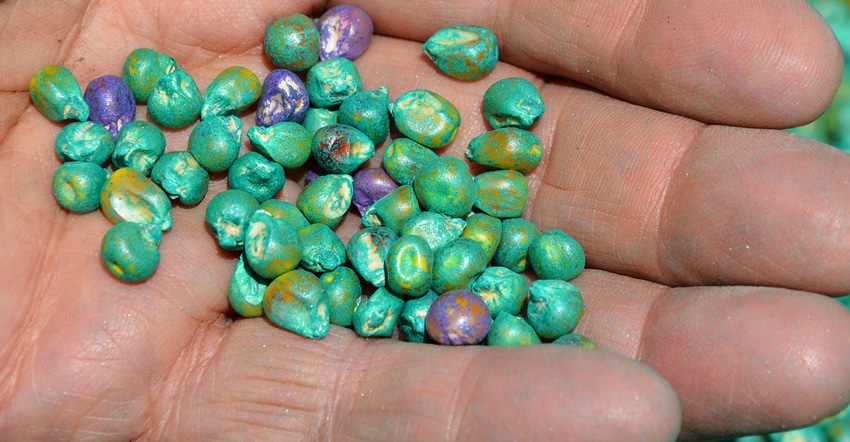
After reviewing comments received this spring on a draft document of stewardship guidelines for handling neonicotinoid insecticide-treated seed, the Minnesota Department of Agriculture has issued a best management practices guide.
MDA, in collaboration with University of Minnesota Extension and others, developed guidelines and BMPs in response to a special registration review on neonicotinoid insecticides to address the risk to pollinators from seed treatment dust during planting season, according to Allen Sommerfeld, a senior communications officer with MDA.
Insect pollinators play an important role in maintaining biodiversity and ecological balance in natural ecosystems throughout Minnesota, according to MDA. Pollination activity indirectly provides food and habitat for other wildlife species. Managed honeybees alone pollinate more than $17 billion worth of crops in the U.S. each year. For example, several crops in Minnesota, such as apples, blueberries, sunflowers, clover and canola, depend on pollinators for reproduction.
While the focus of this stewardship plan is on neonicotinoid-treated seed, MDA officials say that most of the suggested BMPs are also applicable to seed treated with other pesticides. The aerial drift of dust generated during planting of neonicotinoid-treated seed raises a variety of environmental concerns, particularly its potential impact on pollinators.
Treating seed with insecticides protects seeds and emerging young plants against early season soil and aboveground insects, reduces potential risks to workers, and lowers the overall amount of insecticide usage per acre. However, wide-scale and prophylactic use of seed treated with insecticides, such as neonicotinoids, may enhance the risk to insect pollinators and their environment.
Main points of the voluntary new BMPs are:
Pests. Adopt an integrated pest management approach to control pests.
Seeds. Follow the directions on the seed bag or seed container before using treated seed. Prevent spillage of treated seed and dispose of leftover neonicotinoid-treated seed and seed bags properly.
Weather. Plant treated seed during appropriate weather conditions.
Planter. Ensure that the planter is functioning properly and consider reconfiguring the planter to minimize dust drift.
Dust. Use dust-reducing lubricants with proven results at the recommended rate.
Communication. Communicate and cooperate with beekeepers before planting treated seed. Become familiar with pollinator-friendly habitat on and near your farm to reduce risk of exposing foraging pollinators to pesticides. If you have a pneumatic planter, avoid planting treated seed when pollinator plants are blooming and bees are foraging. Do not plant treated seed when the wind is blowing in the direction of foraging bees and sites with flowers. Avoid spraying insecticides directly on these sites.
Education. Attend education and outreach programs to learn advancements in seed treatment technology focused on minimizing dust production.
The BMPs can be found online.
Also, the MDA investigates formal and written complaints on bee death incidents related to pesticides. Complaints may be filed online.
About the Author(s)
You May Also Like






